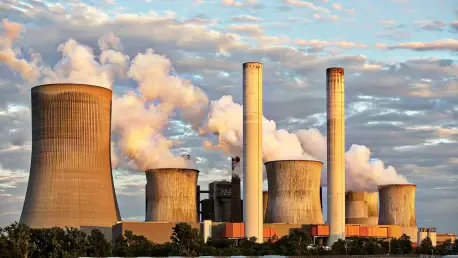Introduction
The Zaporizhzhia Nuclear Power Plant, located in the southern region of Ukraine and known as Europe’s largest nuclear facility with six reactors, has become a critical point of concern amid the ongoing conflict between Russia and Ukraine. Since its seizure by Russian forces in early 2022, the plant has faced numerous challenges, including repeated power disruptions and, most recently, a complete reliance on emergency diesel generators since July 2023. This situation poses significant risks, as stable power is vital to cool nuclear fuel and prevent a catastrophic meltdown. The importance of addressing this crisis extends beyond regional borders, as a nuclear accident could have devastating global consequences. This timeline outlines the key events surrounding the plant’s current state, shedding light on the complexities of restoring power safely in a war zone and the international efforts to mitigate disaster.
Timeline of Events at Zaporizhzhia
2022: Russian Seizure of the Plant
In the early months of Russia’s invasion of Ukraine in 2022, Russian military forces took control of the Zaporizhzhia Nuclear Power Plant. This unprecedented event marked the first instance of a nuclear facility being directly targeted and occupied during active warfare. The takeover shifted operational oversight to Russian authorities, although Ukrainian staff continued to manage daily activities under considerable strain. This development immediately sparked global alarm over the safety of the plant’s operations, with both nations accusing each other of compromising security through military actions in the vicinity. The seizure laid the foundation for a prolonged crisis, intertwining nuclear safety with geopolitical conflict.
2022-2023: Recurring Power Disruptions and Rising Safety Risks
Over the course of 2022 and into 2023, the Zaporizhzhia plant experienced multiple interruptions to its external power supply, a critical element for maintaining safe conditions by cooling nuclear fuel. These outages were frequently linked to shelling and other military activities near the facility, with Russia and Ukraine each blaming the other for the damage to infrastructure. Every disruption intensified fears of a potential nuclear incident, prompting urgent warnings from the International Atomic Energy Agency (IAEA) for all parties to exercise restraint. The persistent power issues highlighted the extreme vulnerability of operating such a facility in a conflict zone, where any damage to essential systems could escalate into a major disaster.
July 23, 2023: Loss of the Last External Power Line
On July 23, 2023, the final external power line connecting the Zaporizhzhia plant to the grid was severed, leaving the facility entirely dependent on emergency diesel generators to sustain critical safety functions. This event represented a critical escalation in the crisis, pushing the plant’s safety systems to their operational limits. Both Russia and Ukraine traded accusations over responsibility for the incident, with Ukraine alleging intentional sabotage by Russian forces to isolate the plant, while Russia pointed to Ukrainian military actions as the cause. Relying solely on generators, though a temporary measure, is far from sustainable, heightening the urgency to restore a stable power connection amidst ongoing hostilities.
Late 2023: Announcement of Power Line Repair Preparations
In late 2023, Mikhail Ulyanov, Russia’s representative to international organizations in Vienna, announced that preparations were underway to repair the damaged power transmission lines to the Zaporizhzhia plant, with work expected to commence by the end of the week following his statement. However, a significant obstacle persists: the repairs necessitate a local ceasefire in the areas where the lines are located, a condition that remains uncertain given the active conflict. This development offers a cautious glimmer of hope, yet it underscores the intricate balance between military dynamics and the pressing technical requirements for ensuring nuclear safety at the facility.
Conclusion
Reflecting on the sequence of events at the Zaporizhzhia Nuclear Power Plant, major milestones such as the Russian seizure in 2022, the recurring power disruptions through 2023, and the complete loss of external power on July 23, 2023, paint a grim picture of escalating risks in a conflict zone. The late 2023 announcement of repair efforts brought a potential turning point, though it hinged on achieving a temporary ceasefire. Moving forward, international cooperation, particularly through the IAEA’s mediation, proved essential in navigating the mistrust between conflicting parties. Future considerations should focus on establishing protective frameworks, such as demilitarized zones around nuclear facilities, to prevent similar crises elsewhere. Exploring further readings on nuclear safety protocols during wartime and the role of global agencies in conflict resolution could provide deeper insights into sustainable solutions for such high-stakes scenarios.









